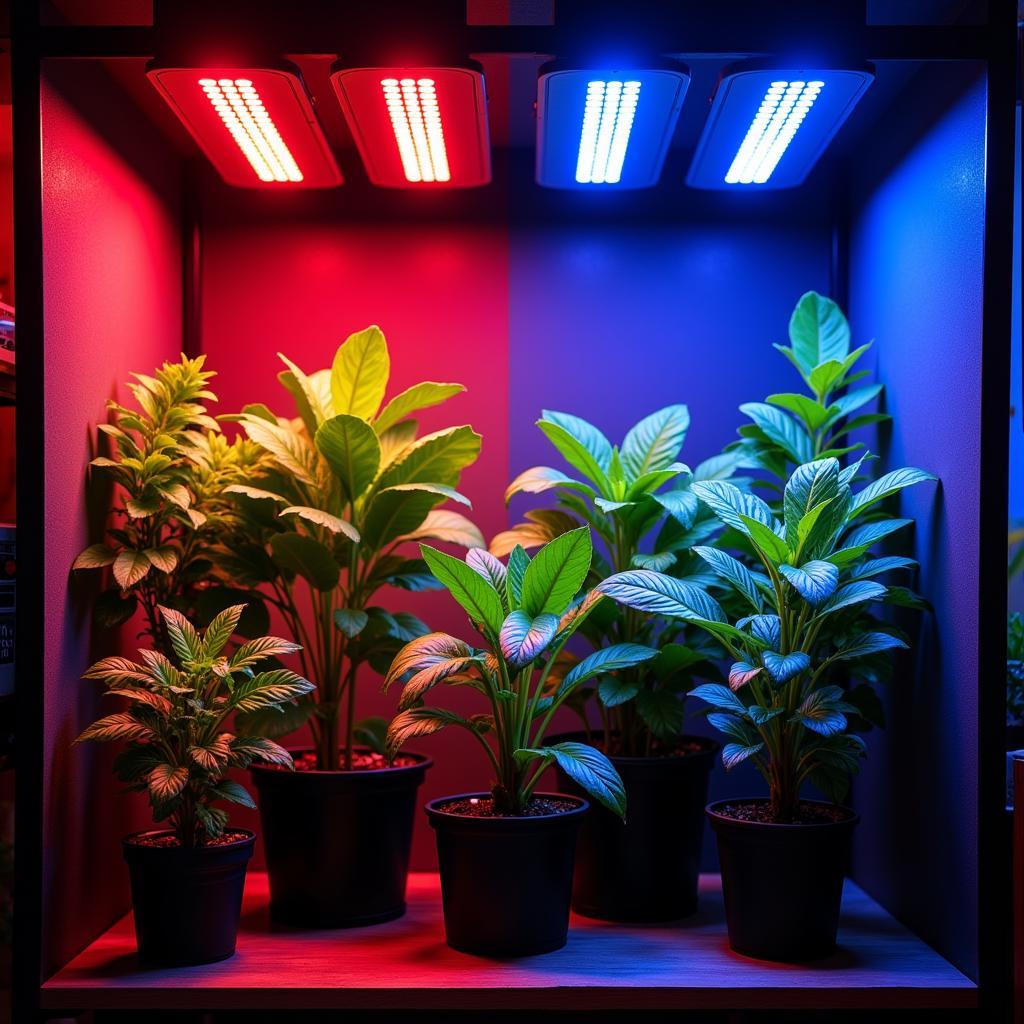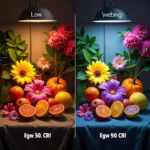Plants, like all living things, need light to thrive. But not all light is created equal. Understanding what color of light plants grow best in can significantly impact their growth and yield, whether you’re a seasoned gardener or just starting out with a few houseplants. Choosing the right light can mean the difference between a flourishing garden and a struggling one.
Knowing the best light color for plant growth is crucial for maximizing your plants’ potential. While sunlight offers a full spectrum of light, indoor growers and those supplementing natural light often turn to artificial lighting. This begs the question: which colors are most beneficial? Soon, you’ll be equipped to choose the perfect lighting setup for your leafy friends. You can also learn more about the effects of light color on photosynthesis at does the color of light affect photosynthesis.
Decoding the Light Spectrum for Plant Growth
Plants absorb light through pigments called chlorophyll. Chlorophyll a and b are the most prominent, and they primarily absorb red and blue light, reflecting green light – which is why plants appear green to our eyes. However, other pigments like carotenoids also play a role, absorbing light in the blue-green and violet regions. So, while red and blue are key, a balanced light spectrum contributes to overall plant health.
The Role of Red Light in Plant Growth
Red light is essential for photosynthesis and plays a significant role in flowering and fruiting. It promotes stem growth and leaf expansion. Using red light can encourage your plants to blossom and produce a bountiful harvest.
The Importance of Blue Light for Plants
Blue light is crucial for chlorophyll production and encourages strong, healthy stems and compact growth. It’s particularly important for seedlings and young plants during their vegetative stage. Want sturdy, robust plants? Blue light is your answer.
 Red and Blue LED Grow Lights for Indoor Plants
Red and Blue LED Grow Lights for Indoor Plants
Beyond Red and Blue: Exploring Other Colors
While red and blue light are the workhorses of plant growth, other colors within the spectrum also contribute. Green light, while largely reflected, can still be absorbed to some extent and plays a role in canopy penetration, reaching lower leaves. Similarly, small amounts of far-red light can influence flowering and stem elongation.
Do Plants Need Green Light?
While less crucial than red and blue, green light still has a function. It helps light penetrate deeper into the plant canopy, benefiting the lower leaves. This means even those shaded leaves can contribute to photosynthesis, maximizing the plant’s energy production.
Understanding the Impact of Other Light Colors
Far-red light can impact flowering and stem elongation, while UV light, while potentially harmful in high doses, can stimulate the production of protective pigments and compounds. Finding the right balance is key to optimal growth.
Choosing the Right Grow Lights: A Practical Guide
When choosing grow lights, consider the plant’s specific needs. Leafy greens, for example, benefit from higher levels of blue light, while flowering plants thrive under a combination of red and blue. There are a variety of grow lights available on the market, including fluorescent, LED, and HID lights.
Common Questions About Plant Lighting
What are the best grow lights for indoor plants? LED grow lights are a popular choice due to their energy efficiency and ability to provide specific light wavelengths.
How close should grow lights be to plants? The ideal distance varies depending on the light type and the plant’s needs.
Are LED grow lights safe for plants? Yes, when used correctly, LED grow lights are safe and effective for plant growth.
For more information on when to plant strawberries in Colorado, visit when to plant strawberries in colorado. If you are interested in learning about what color light is best for sprouting seeds, visit what color light for sprouting seeds. For those interested in what color light plants grow best in, specifically, you can find more detailed information at what color light does plants grow best in. You might also be interested in learning more about what vegetables grow well in Colorado, and you can find that information at what vegetables grow well in colorado.
Conclusion
Understanding what color of light plants grow best in is crucial for successful gardening. By providing the optimal light spectrum, you can maximize your plants’ growth potential and enjoy a thriving indoor or outdoor garden. Choosing the right light is an investment in your plants’ health and your gardening success.
FAQ:
- What are the primary colors of light that plants use for photosynthesis?
- How does blue light affect plant growth?
- Why is red light important for flowering plants?
- Can plants grow under only green light?
- What are the different types of grow lights available?
- How do I choose the right grow light for my plants?
- How can I tell if my plants are getting enough light?
Other possible questions:
- What is the role of light intensity in plant growth?
- How does light duration affect plants?
- Are there specific light requirements for different plant species?
For further information, check out these other helpful articles:
- The Importance of Light Spectrum for Indoor Plants
- Understanding Photosynthesis and Plant Growth
- Choosing the Right Grow Lights for Your Garden
Need Help with your plant lighting? Contact us at Phone Number: 0373298888, Email: [email protected], or visit us at 86 Cau Giay, Hanoi. We have a 24/7 customer support team ready to assist you.

